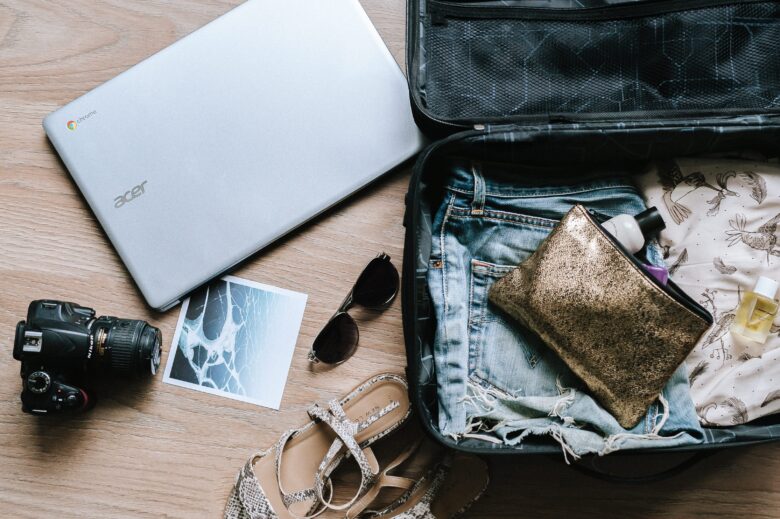Going on an adventure abroad or off to live the digital nomad life? Then there’s something you shouldn’t forget to add to your pre-departure to-dos: purchase travel insurance. No one likes to think about the worst-case scenario unfolding while on a dream vacation, but it’s important to do so.
Read on to find out why, how to find the best travel insurance plan for you and my personal recommendations for travel insurance based on coverage, flexibility and affordability.
Travel lesson #1: Expect the unexpected
When we plan our trips, we focus on all the amazing things that could happen, but we often forget about unexpected circumstances like getting food poisoning, being in a cycling accident, or having our luggage lost or stolen. Many of us plan our travels thinking those things won’t happen to me. Those things happen to other people.
But let me tell you a story.
When I was 23, I decided to spend a few months traveling and volunteering in India. The trip started in Goa without a hitch. My friend Melissa and I spent our days relaxing on the beaches, meeting locals and delving into local specialties.
But we also approached every situation with caution. We never stayed out after sundown. We had been taking our anti-malaria pills. We only drank bottled water and only ate food that was served piping hot in seemingly well-maintained restaurants. But as we ventured on to Mumbai, and then Agra, our next stops, I began to feel a little funny.
What started as occasional stomach cramps eventually evolved into something so painful that I had to pay a man on the street to carry my luggage because I could barely walk upright.
I had experienced a severe case of food poisoning before in Vietnam, but this was different. This felt like I had a small being trying to claw its way out of my torso. (Melissa and I referred to as my “alien baby” from that point forward.)
A bad situation made better
After a 24-hour train trip, I was hospitalized upon my arrival in Agra. As I took in the less-than-appealing conditions of the hospital (my nurses wore tank tops and flip flops and there was only electricity a few hours out of the day), I came to accept the fact that I’d die there in that dark, damp room.
Dramatic? Yes. But things were looking grim. In fact, the doctor told me that had I waited another day to go in, I would’ve gone into septic shock.
Fortunately, the care was good, and I was lucky to be put in the only private room in the facility. Over the course of the next few days, I received multiple antibiotics to clear up the E. Coli that had plagued my body.

Upon discharge on day five, I was feeling much better.
The bill came out to about $1,500, which I was able to charge to my credit card. This would’ve been a hefty fee to pay unexpectedly, especially for 23-year-old me. But I had been smart to purchase travel insurance, and was eventually completely reimbursed, minus the small deductible I had to pay.
I had had no idea what my stay was going to cost, so knowing I had insurance also offered some peace of mind in an otherwise extremely stressful situation.
Moral of the story: When traveling, expect the unexpected. And be prepared for when the unexpected does happens. Because those things happened to me, and they can happen to you, too.
What does travel insurance cover?
Different travel insurance policies cover different situations outside of sickness and injury.
Most travel insurance plans cover:
- Medical emergencies
- Medical evacuation
- Accidental death and dismemberment
- Trip delays, interruption and cancellation
- Lost, damaged or stolen luggage
Depending on what plan you buy and when you buy it, travel insurance can also cover:
- Rental car damage
- Pre-existing conditions
- Trip cancellation for any reason
- COVID-19-related sickness and trip interruptions
Uncovered things (or exclusions) may include:
- Extreme sports where the chance of injury or death is high. (World Nomads has a plan specifically for those who plan to engage in a high-risk sport or activity during their trip.)
- Injury or death occurring as the result of being under the influence of controlled substances
- Fear of traveling (for example, to a country listed on the State Department’s Do Not Travel list)
- Pregnancy
- Medical travel

Things to consider when choosing a travel insurance plan
Buy before you depart. First things first. Travel insurance is designed to cover unforeseeable events – not things you would easily expect to happen, or things within your control.
In other words, if you wait to buy insurance for your Cancun getaway after a named hurricane is propelling its way to the Mexican coastline, your losses wouldn’t be covered. Your best bet is to buy before you go, ideally 14 days before your departure.
Note what type of policy it is. Pay close attention to whether your travel insurance is primary or secondary. If your plan is secondary, the travel medical bills first go to your existing health plan for payment. They’ll apply deductibles, copays and maximums, and pay what is covered by your health insurance plan. After that, your travel insurance will pay what’s left, up to the benefit limit.
However, if your travel health insurance is primary, it will be the first policy to pay your travel emergency medical bills.
A note on pre-existing conditions. If you have a pre-existing condition, check the rules of the plan and whether it will cover your pre-existing (and how the plan defines that term). Many plans may cover pre-existing conditions, but only if you buy your plan within 15 days of when you made your first deposit on your trip.
What’s the lost luggage policy? Many travel insurance baggage claims aren’t paid until you file your claim with an itemized list of lost travel items – WITH the original receipts! (Really, who has those?!) Look for one that will reimburse you for lost or delayed luggage while you’re still traveling, and don’t require itemized lists or receipts.
How does reimbursement work? In most scenarios, travel insurance reimburses you for your covered financial losses after you file a claim and the claim is approved. Filing a claim means submitting proof of your loss to your insurance provider for verification. Once you’ve filed a claim and it’s been verified, you’ll get your covered losses back.
So, for example, let’s say you come down sick and are diagnosed with pneumonia a few days before your trip. You call the airline and hotel that you’ve booked your tickets and accommodation with, but they tell you it’s too late to cancel.
Without travel insurance, this would be a considerable financial lost, but with insurance, you could file a trip cancellation claim and get most of your money back once you’ve submitted the required proof.
So, be sure to hang on to all those receipts – and request that they’re itemized, if possible.
The key takeaway: Read your policy before you buy – and make sure it fits what you want or need from your travel insurance.
What travel insurance company should I choose?
First, I’ll start by saying my personal go-to travel insurance company is Safety Wing, specifically their Nomad Insurance policy. Here’s why:
- It’s affordable. I pay a very-low $40 per four weeks. Since I am a digital nomad and require coverage around the clock for an extensive period of time, this makes sense for me. Safety Wing’s policy works like a subscription; it auto-renews every month until I pick an end-date. (It costs a bit more for people over the age 39, or if you’re traveling in the US, but you can use the price calculator tool to get an instant quote below.)
- It’s flexible. I can cancel whenever I want. Also, since I’ve been abroad for 90 days, I can keep my insurance in the US (my home country) for up to 15 days if something happens there.
- It’s inclusive. It covers people from all over the world, while outside their home country. It’s great for parents traveling with kids, too, as up to two children under 10 per adult can be included on the insurance free of charge.
- The coverage is great. It covers just about everything from injury to lost luggage to even COVID-related situations, with a $250,000 max limit. The deductible is fairly low, too, at $250.
That said, that there are countless travel insurance options out there. It really comes down to what you need from your policy.
Do you have a pre-existing condition? Will you be spending your days abroad skydiving and ice climbing? What age group do you fall into? Are you looking for a budget-friendly option with basic coverage, or something more extensive?
Below is a list of other highly rated travel insurance companies, along with what makes each stand out from the rest:
- World Nomads: Great for adrenaline seekers, as adventure sports are covered at no additional cost
- AIG Travel Guard: Coverage is tailored to your specific trip
- Seven Corners: Offers coverage for pre-existing conditions
- Generali Global Assistance: Sporting equipment coverage is included
- IMG Travel Insurance: Offers plans specifically designed for retired travelers ages 65 and older
Once you find and purchase the right travel insurance policy for you, you can rest assured you’ll be covered while away from the comfort of your home country. This, in turn, will make your trip abroad far more enjoyable by giving you peace of mind. After all, who doesn’t want that from their vacay?




